According to TechJury, there are 4.66 billion active internet users globally. This gives website owners a seemingly infinite pool of opportunities to attract leads, convert them, and make significant sales. So why is having the fastest web hosting necessary?
Well, did you know that a slow website could see you lose potential clients? Understanding how to improve website loading speed is paramount to any business’s promotional efforts online. And investing in the fastest web hosting service will give you a significant leg up.
As such, we at RoseHosting, created this definitive guide on how to increase website speed to positively impact your bottom line. You will discover:
So let us get to it.
When customers land on your website, they want to find the information needed quickly. And a recent Google study confirmed that your page load speed is crucial in determining whether visitors stay on your website.

If your page load speed is longer than three seconds, a potential customer will likely become frustrated and click away. And when Google’s algorithm picks up on this high bounce rate, your ranking will undoubtedly drop. In fact, it’s not just Google that considers this as a vital metric. Bing, the second largest search engine after Google, also regards page speed highly.
A slow page load speed resulting from a lack of website performance optimization directly impacts the user experience. So, no matter how attractive your website, if users don’t get the information they want timeously, you’ll soon be on the back foot.
As a website owner, you want your website to look as professional as possible with a high-end design. But bigger doesn't necessarily mean better. The bells and whistles could slow your website down, which will harm user perception.
If your web pages take too long to load, users may not view your business as you had hoped. You’ll likely lose out on potential conversions and website traffic, harming your SEO and authority.
Since search engines regard speed as a primary factor in ranking, how fast is fast? According to Maile Ohye of Google webmasters, “you should aim for less than two seconds if running an eCommerce site”.
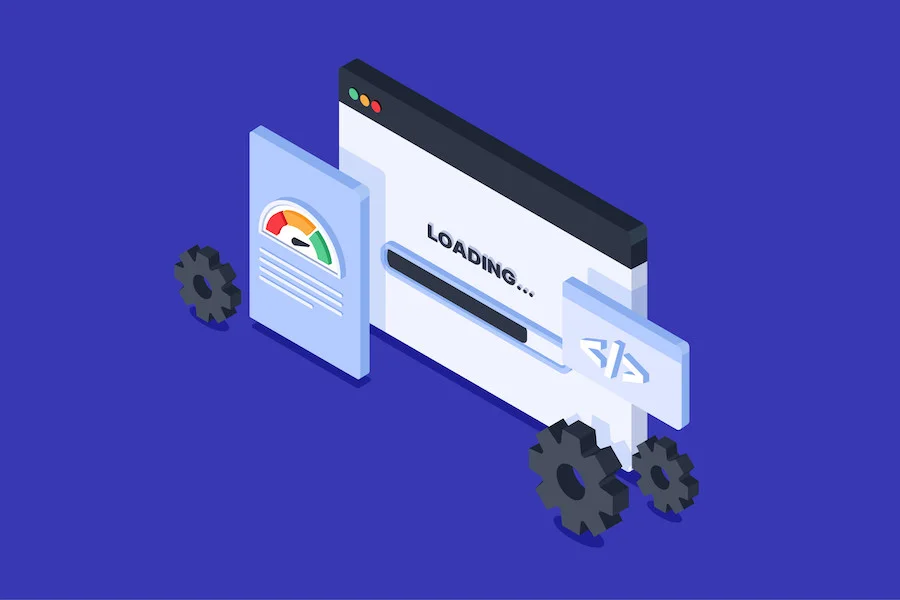
Unfortunately, this statement was released over a decade ago, and you can expect stiff competition from advanced technology today. Recent studies show a severe decline in user retention when the users face delays.
However, it’s crucial to note that website loading speed is dependent on several factors. These include the browser and device used to access the website and the visitor's location. So, it’s best to ensure your website speed optimization efforts are customer-focused.
Furthermore, your website should lead the pack with lightning-fast page load speeds. Here is a snippet of how websites in various US sectors currently perform on average in terms of load times:
A manual speed check may fail to determine the exact website loading speed. However, various notable tools will do the job perfectly. Some of the tools used to determine website load speed include:
This is Google's very own tool, and it comes in handy when determining how users experience your website. This page speed tool includes "Time to First Byte” features and a performance diagnosis report.
Moreover, you can obtain both a desktop and a mobile device report. This allows for a more specified solution to enhance the user experience.
Here is a sample showing the results when testing our RoseHosting website:
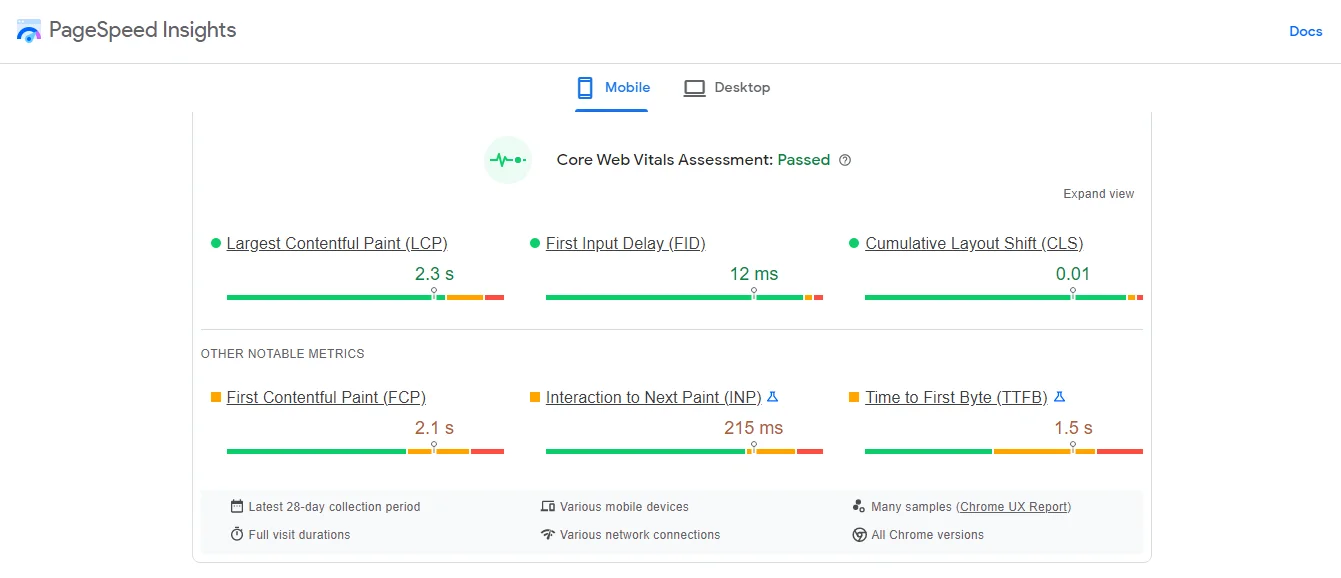
This tool grades your website based on performance and structure. Moreover, it offers you insights on critical issues affecting performance and directs you on how to amend these.
The RoseHosting website scored as follows when using the GTMetrix tool:
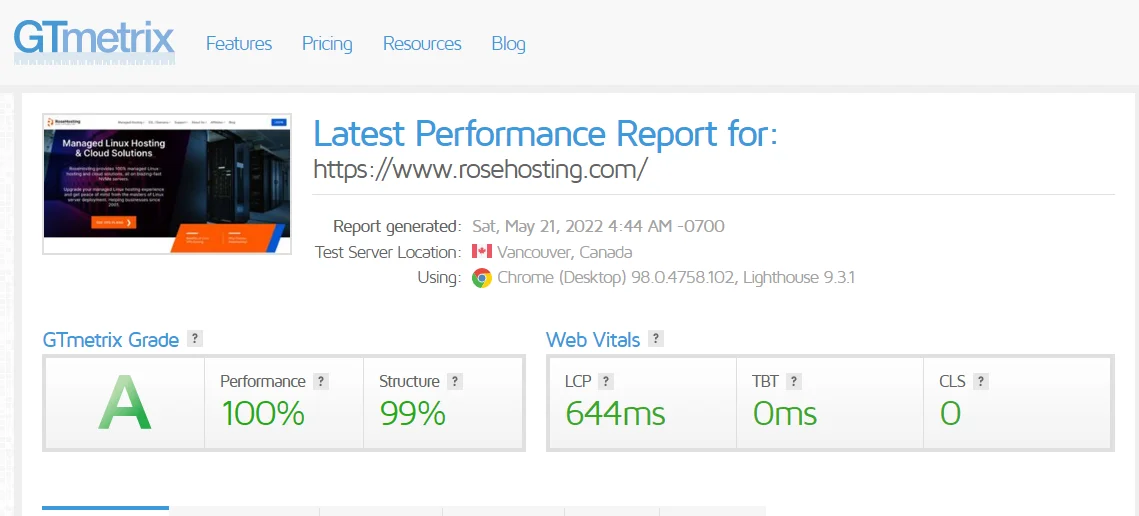
No matter how good your web development skills are, Pingdom offers an easier way to identify how fast your website is. It gives you a website performance grade, load time, and suggestions on the improvements needed.
Here is a look at our RoseHosting website results through the Pingdom tool:
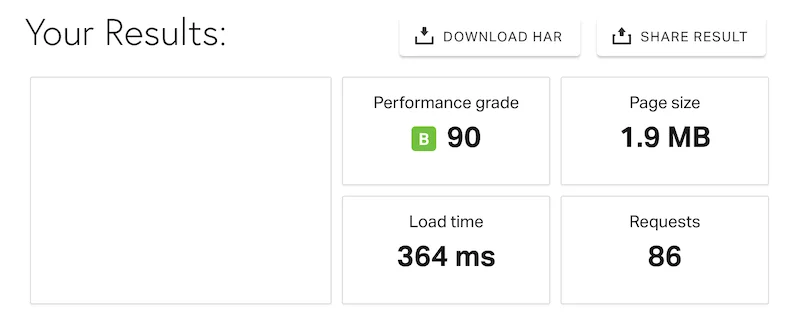
We now understand the importance of page speed for SEO. And we’ve discussed some of the tools needed to determine your website's current page load speed. But how do you increase website speed?
Here are 20 simple approaches when determining how to improve website loading speed:
When setting up your website, your first step will be signing up with a web hosting service. This is the most crucial step in ensuring your website performs well in all respects.
The web hosting provider lays the foundation for future website performance optimization. Therefore, you must select the fastest web hosting service to ensure the success of your website and business.
You may opt for shared hosting since it’s ultimately less costly. However, you should note some downfalls to shared hosting, many of which crop up later as the site grows.
Since many other users share the server with you, it will experience a great deal of strain. And this will ultimately slow it down. This harms your website load speed. And is likely to result in users clicking away, leaving you with a high traffic bounce rate.
Any reliable hosting provider will offer one or both of the following hosting plans:
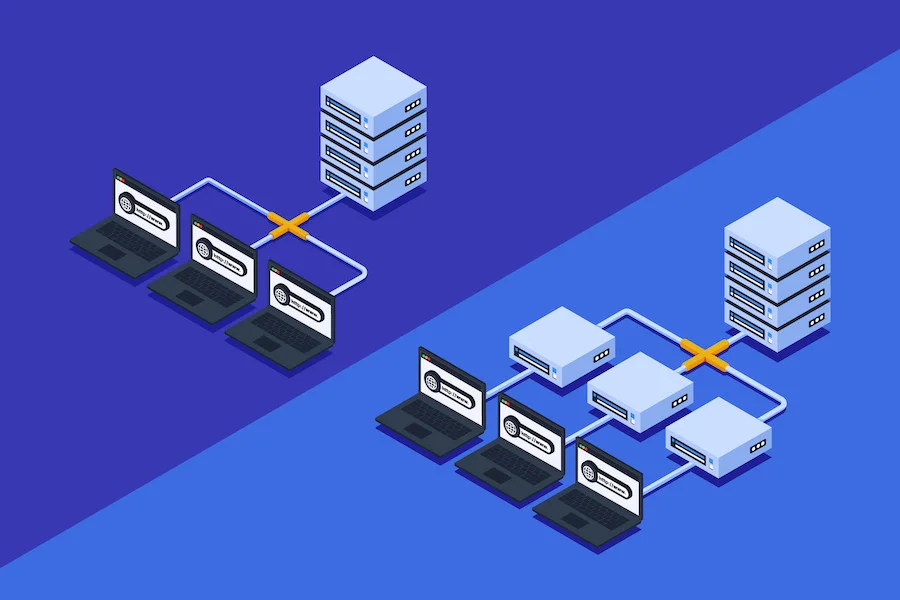
Selecting the fastest WordPress hosting via a dedicated server or VPS service will put an end to this issue. But what do these terms mean?
With this option, you are granted complete control of a server for your website. You are not sharing any bandwidth or resources with other domains on the provider’s list. However, this option comes at a more expensive price tag. And it may not be a good option if you’re starting out with a small website and a limited budget.
You probably understand how VPS hosting works if you're familiar with cloud computing. You’re provided with a server shared over several computers when you opt for this type of hosting plan.
Unlike the dedicated server option, a VPS plan is scalable and comes with a lower price tag. Therefore, if you own a small to midsize business or blog, this could be the ideal option.
As the fastest web hosting provider, RoseHosting is equipped to provide various fully managed hosting services. In fact, we are among the best in the business for VPS-based web hosting.
RoseHosting services are built on LiteSpeed and WP Oxygen Builder platforms for unmatched website performance optimization.
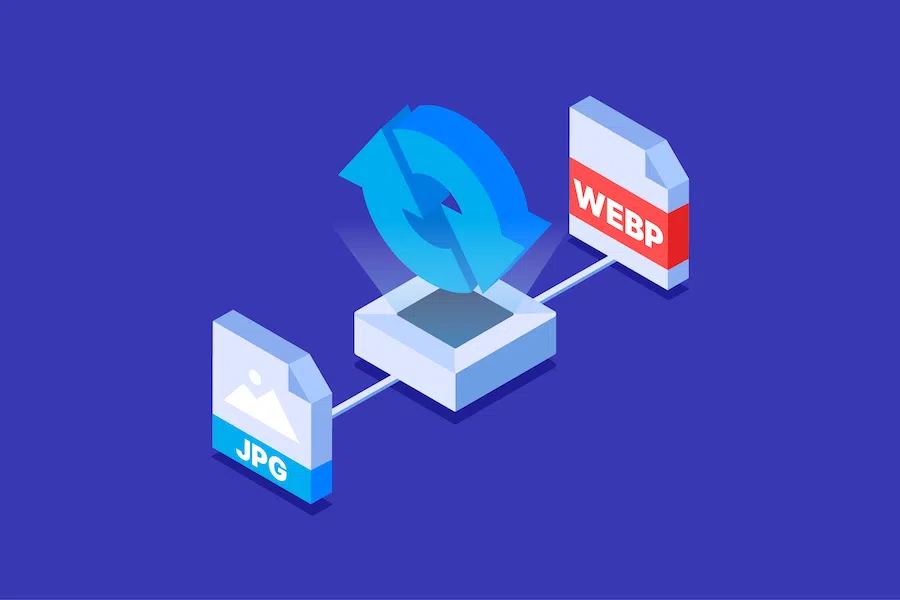
Another solution when determining how to improve website loading speed is to reduce the size of your website images.
Large blocks of text on your website will be less attractive to visitors or potential customers. Therefore, it’s common practice for a well-designed website to be visually appealing with images & videos to capture visitors' attention.
As such, you may opt for several images and some videos to draw people in. However, it’s essential to note these also play a significant role in your page load speed. Large images take longer to load, slowing down your website load time.
When it comes to images, the following are some page speed optimization techniques you can employ:
You can also use innovative tools to optimize your website images for improved website loading speed. For example, Picresize, Gimp, Photoshop, and ImageOptim are great tools for minimizing image size and load times.
Moreover, you’ll find an image optimization tool called Smush if using WordPress. It’s a free plugin that strips away unnecessary image data while maintaining the quality of the image.

Webmasters frequently use plugins to add specific elements to a website. While they serve the visual appearance and functionality well, they’re often a primary culprit in slowing your website loading speed.
So, how many plugins are too many? There’s no definitive answer to this question. But experts advise reducing the number as much as possible. The general rule of thumb is to incorporate a plugin only if it provides value to the user.
Plugins slow down your page load speed because they’re extra lines of code added to the website’s existing code. Your website scans this code to load each page. And the more code there is, the longer it takes to scan.
Check on your plugins from time to time, typically from four to six months. You can disable or delete them if:
If your website has too many plugins, pinpointing the ones slowing the site speed down can be challenging. For a safe plugin audit, open your website in a staging environment and deactivate those that no longer serve you.
It’s best to use a website speed testing tool like Pingdom, GTMetrix, or Google PageSpeed insights. The switch on the plugins one by one as you test for speed and performance.
Variable plugins may increase your website loading speed in small increments. However, if you notice a significant increase, be wary of the offending plugin.
After you’ve determined which plugins are affecting your page load time and performance, look for alternative plugins to do the job. Or you could simply do away with them if the service they provide is not essential.
It should also be mentioned that third-party plugins can be a channel for exposing security vulnerabilities to hackers. So, it's advisable to use plugins developed by reputable companies and only use them when absolutely necessary.
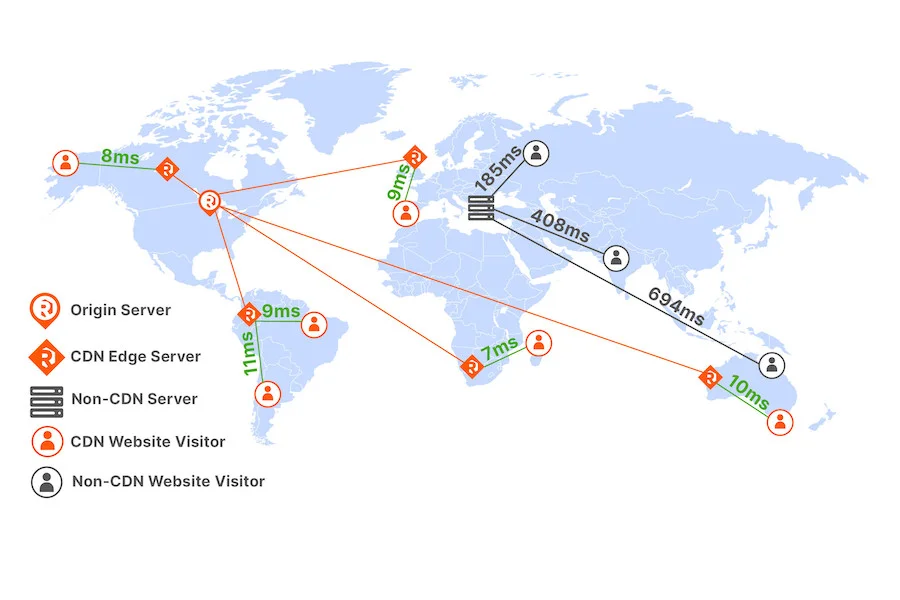
As written in Marshall McLuhan’s book, The Gutenberg Galaxy, “… the internet makes the earth a global village”. This statement implies that anyone from across the globe can access your website at any given time.
Bear in mind that information passes through a series of servers. Therefore, the further away the user is, the longer it could take for them to access your information. To avoid excluding or frustrating foreign visitors, use a content delivery network or content distribution network (CDN).
A CDN distributes essential data to a network of servers around the globe. Your website will be hosted on a server in the network that’s closer to foreign visitors.
For example, perhaps your primary server is in Texas, USA, and a potential customer is accessing it from Australia. With a CDN in place, the customer won't have to wait for the Texas server to respond. Instead, a server closer to their location will sweep in to offer the information needed.
This action translates to faster Time To First Byte (TTFB) and loading time, positively affecting SEO and user experience. Some of the best CDN tools you can use include Fastly, CloudFlare, Amazon CloudFront, and MaxCDN. Employing any one of these is a step toward optimal website performance optimization.
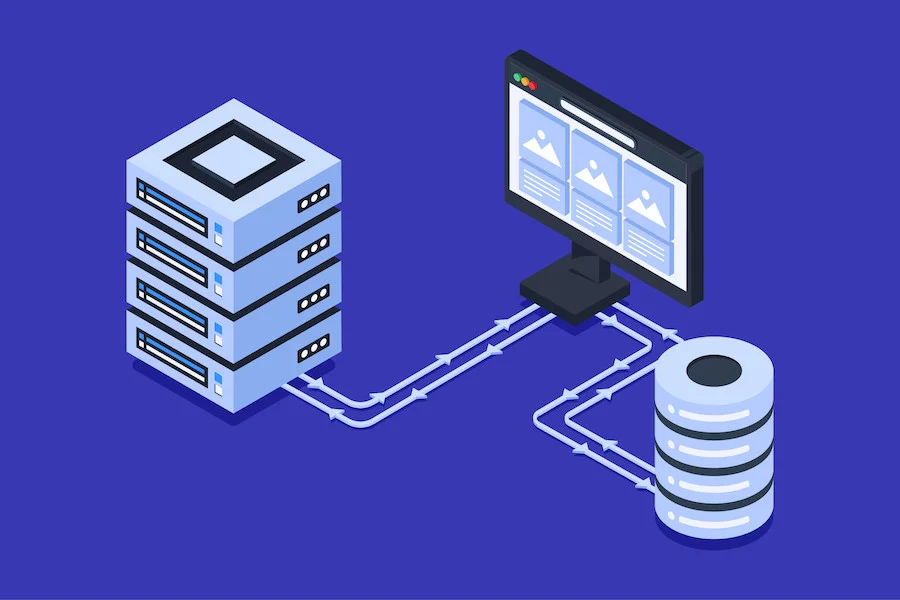
Each time a user visits your website, the website loads images, fonts, and graphics, among other elements. These downloads utilize a great deal of memory and increase the page and website load speed.
However, browser caching temporarily enables a visitor’s browser to store vital website elements. As such, repeat visitors will quickly retrieve the stored data to populate your web pages faster. For new visitors, it may take time to have the browsers cache your website’s data.
You’ll find that browser caching is essential when learning how to increase website speed. But perhaps your WordPress hosting provider does not offer browser caching. In that case, there are WordPress caching tools you can use, including wp-rocket, W3 Total Cache, and WP Super Cache.
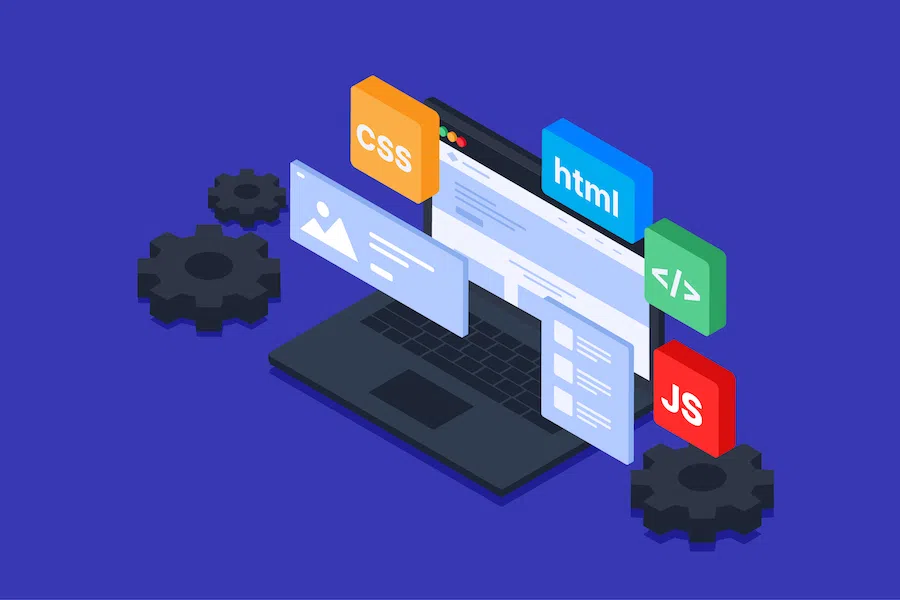
Like reducing image size for page speed optimization, you can also optimize your website’s code. This implies doing away with unnecessary characters, white spaces, and repeated elements.
To achieve this, you can either Minify or Gzip the codes. And according to Google, you must minify any JavaScript file exceeding 4096 bytes.
In fact, this optimization method is most effective when Minifying and Gzipping are initiated simultaneously. But it’s essential to note that Gzipping works on the server-side. When it comes to Minification, you can utilize tools such as W3 Total Cache, BWP Minify, and WillPeavy.
However, refrain from Minifying HTML extensively, which often disrupts the website code. This would make it more challenging for users to access your website leading to increased CPU power usage and prolonged memory cycles.
So, monitor any performance change when you Minify the code to ensure only the unwanted elements are removed. When done correctly, code Minification is a crucial element in figuring out how to increase website speed and boost SEO.
When using the WordPress CMS, unnecessary data like spam comments, pages, posts, and other unwanted material are stored in the database. This database will usually become crowded over time and slow website loading speeds.
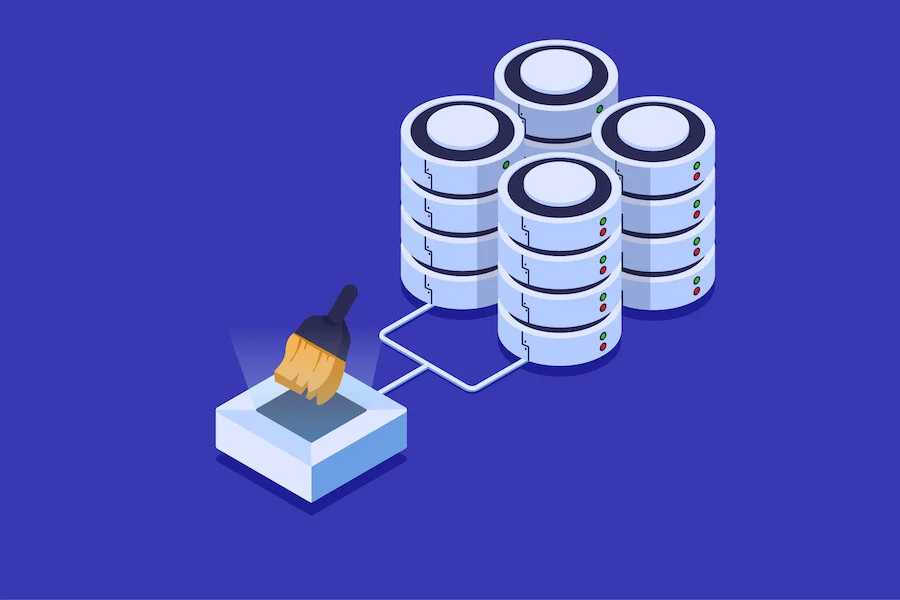
One of the most affected folders in your website's file structure is the “wp_content” folder. This is typically a folder storing your website visuals like videos and images.
To avoid overcrowding these folders, it’s advisable to do a regular folder clean-up. This will allow servers to fetch data more effectively. And it’s a crucial step in the website performance optimization process.
It’s also advisable to switch to the “InnoDB” storage engine in the MySQL database tables instead of the default “MyISAM” storage engine.
Another solution is to embed an automatic garbage-purging code in the “wp.config php” folder. Simply add the following code to your wp-config.php file: “define('EMPTY_TRASH_DAYS', 7 );”. Here the digit “7” specifies in days how often an automatic database optimization should take place.
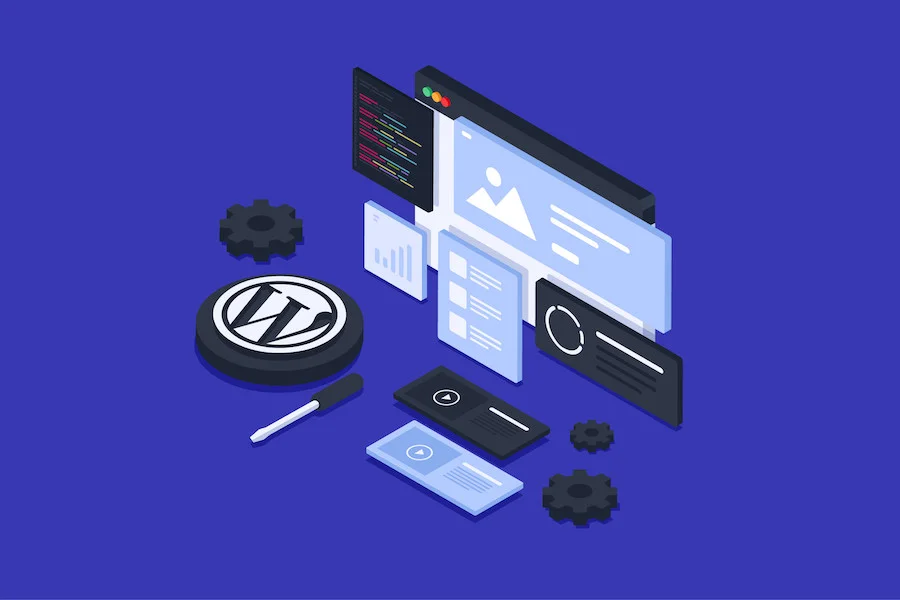
When a user lands on your website, the first thing they’ll often note is how your information is structured. And, if you’re using a WordPress theme, this structure is dictated by the theme you select.
While an intricately designed theme may make your website look appealing, it comes at a cost. And this cost lies in the additional lines of code, which often add to your website loading speed.
Moreover, not all WordPress themes available are optimized for easy data fetching and element–loading. Since testing out different themes only consumes time, it is best to research the best WordPress theme according to expert views.
With RoseHosting as your WordPress hosting provider, your WordPress website will have a better chance of dealing with this additional code. As the fastest WordPress hosting service, you’ll have access to tools optimized for the best possible website performance.
Like using a CDN to host your website data on separate servers, an external hosting platform can help. This is especially effective when your website has large files like videos.
While you can upload the file directly to your website’s server, you could face the following three limitations:
The most notable external hosting platforms you can use to embed videos on your site include:

This is the largest and most common platform people go to search for videos. According to Backlinko, YouTube sees an influx of over two billion users monthly.
Moreover, it’s a free platform and can be an excellent place to get your brand noticed. Note that YouTube limits your file upload size to 256 GB or 12 hours.

Wistia is a video platform unlike most others, as it is marketing-focused. Through Wistia, you can view video analytics such as viewer demographics, location, and view retention rate.
You can also customize your content as needed to showcase your brand image. However, you can only upload the first three videos and no cost. After that, you’ll need to select a paid plan to continue using the service.

According to Semrush, Vimeo receives 158.4 million monthly visits and ranks second in the video hosting arena after YouTube. This service is also a great way to get your brand out to the public. And it can be a fantastic way to attract traffic to your website.
However, the basic plan limits your weekly uploads to 500 MB. Aside from this plan, paid options give you extra storage space of up to 5 TB.
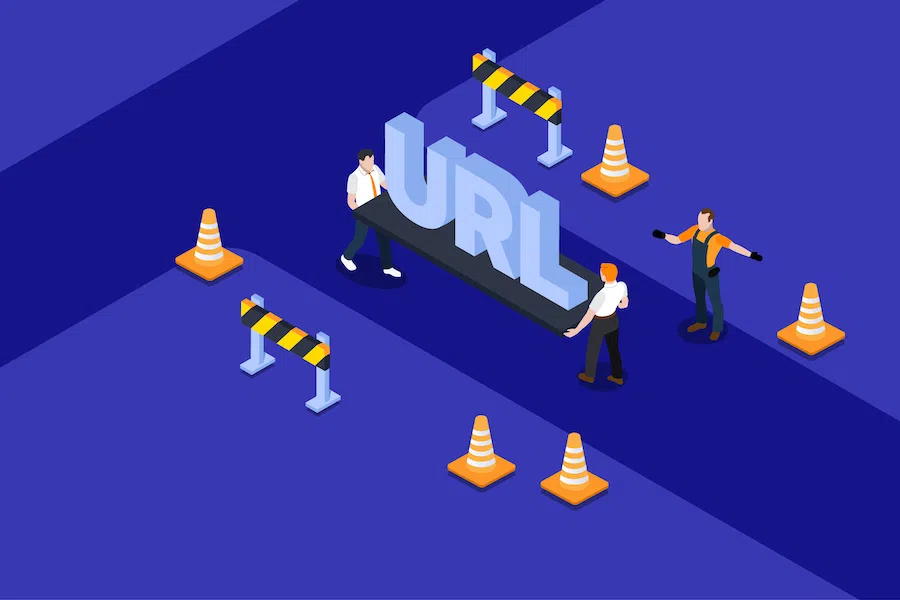
A website that contains too many redirects is prone to more extended web page load times. Your user experience and SEO are negatively affected due to multiple HTTP requests and the lagging response rate.
However, there are instances when these redirects are necessary, and you cannot do much about them. But you can reduce the number of redirects by avoiding null redirects in your menus and internal links.
If possible, it’s best to ensure you have no more than two redirects to allow for faster load time. This is a vital point when learning how important page speed is for SEO. One of the tools you can use to check a website’s redirects is Screaming Frog.
Once you have identified the redirects and determined the unnecessary ones, you can delete them. This can be done within the “.htaccess” file.
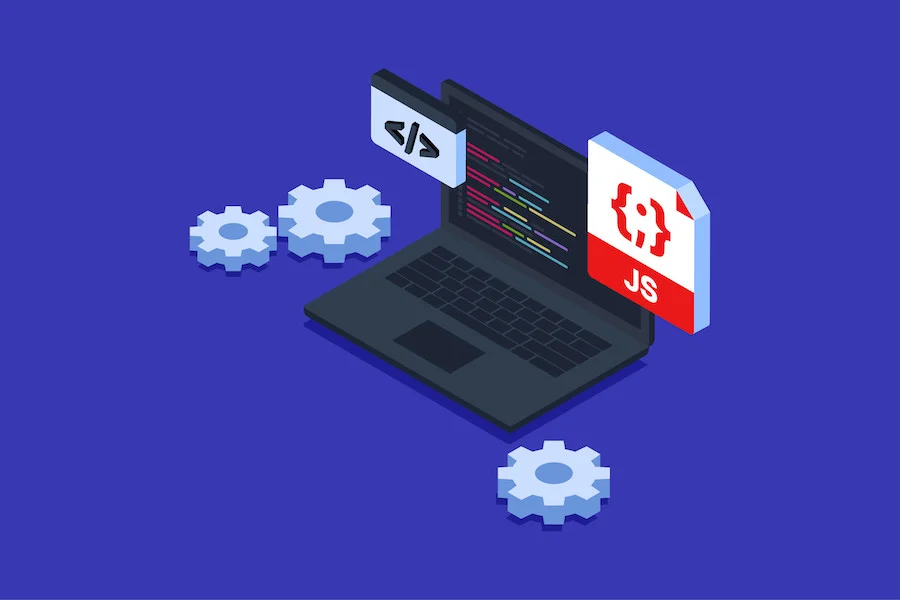
With the fastest web hosting behind your website, optimizing the loading of your website’s code will increase your website speed.
This action simply refers to configuring your CSS and JavaScript elements to load in a specific way. Typically, a website will load one element at a time, delaying the other elements till it finishes the process.
But you can optimize these elements to load simultaneously, which will reduce the overall page load time. However, there are elements that you can set to load independently to allow for the loading of other elements first.
You’ll use the WP Rocket plugin to execute this website speed optimization method. And you’ll select the “render-blocking JS/CSS” option within this plugin to initiate the process. After the optimization, check whether the site operates and loads these elements as expected.
Note that this website performance optimization technique is more effective after Minifying the CSS and JavaScript code.
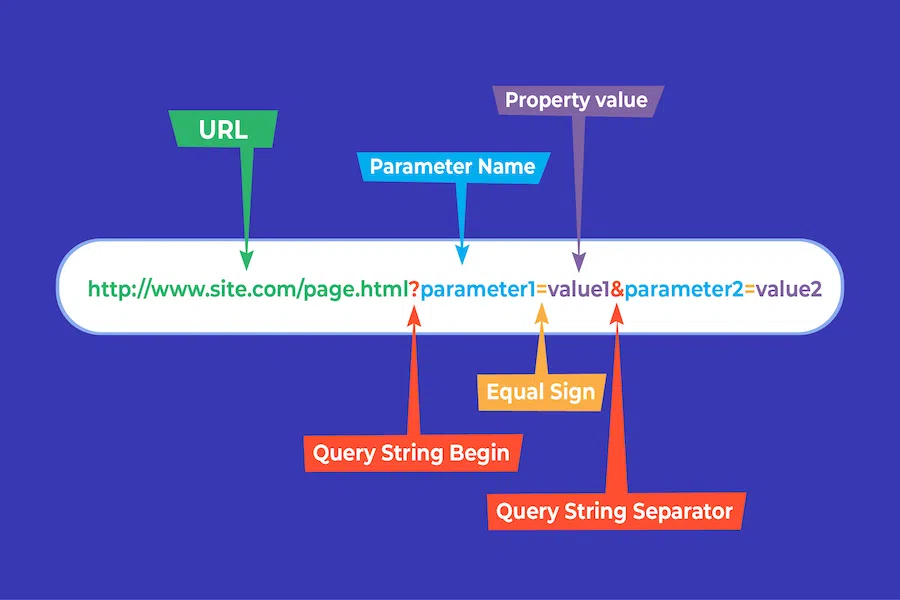
A query string comprises the extra characters that appear after a base URL. These characters help users find the latest version of the specified data set or page.
While the need for query strings sounds appealing, these characters do not work well when using CDNs and caching. The correct way to do away with query strings incorporates the following:

Displaying ads is an excellent way of generating extra revenue through your website. It’s a great way to leverage your traffic and monetize your website without additional manual input.
However, your website loading time can be negatively affected by some ad formats or having too many ads. These ads make lengthy HTTP requests to the servers delaying how and when particular elements load.
These prolonged load times are especially prevalent in pop-under and interstitial ads. On the other hand, pop-up ads take away from the user experience and are a primary turn-off to many web users.
It’s also vital to note that affiliate codes comprise a few lines of code. And this code also drains memory and prolongs the data processing cycle. The solution lies in minimizing the number of visible ads on your website. Or you optimize them to display in a specific time-delay order for enhanced page speed optimization.
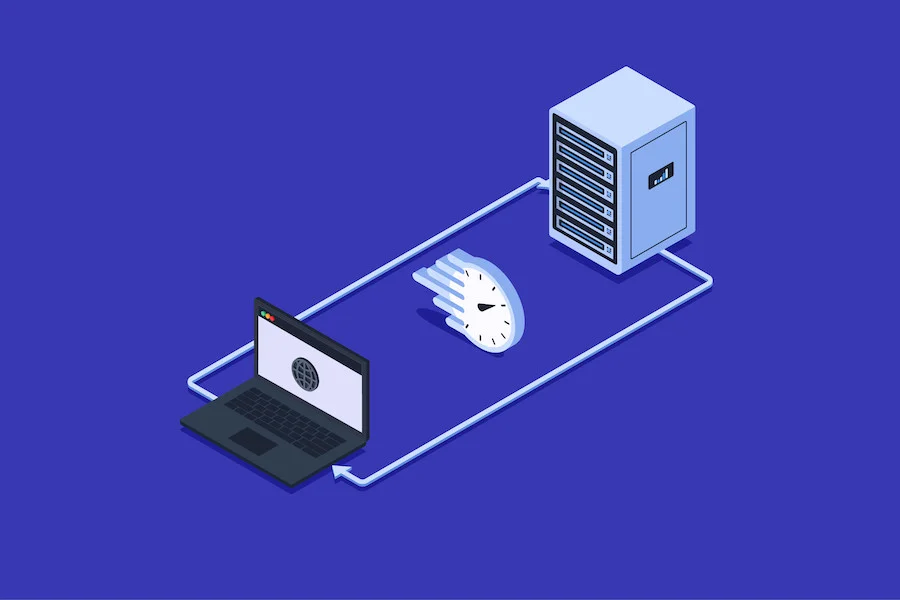
TTFB implies the duration of time a visitor has to wait for the server to give a response. Ideally, keeping the TTFB to less than 200 ms is the right step, according to Google.
When learning how to increase website speed, it’s essential to note that TTFB is directly affected by the web server. With the fastest web hosting through RoseHosting supporting your website, your TTFB will automatically be reduced.
You can test your site’s TTFB by using the Chrome developer tool or a plugin. However, the nature of your internet connection affects the result you get. So, if your internet connection is fast, the TTFB report will indicate a reasonable rate.
Third-party test tools such as WebPageTest, allow you to test using a mobile or desktop browser from different global locations. A report showing less than 200 ms from different server locations is an excellent sign.
To further reduce the TTFB load time, you can enable browser caching. This allows for the temporary storage of website data or elements. Therefore, the server won’t have to make unnecessary data requests when repeat visitors open your website.
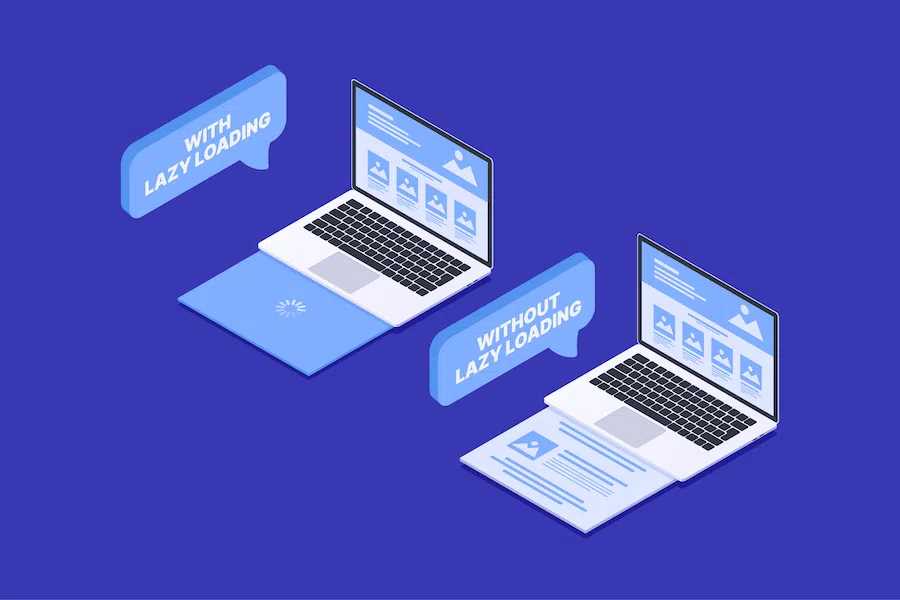
Depending on the amount of content your website has, you will find that loading everything at once takes time. However, since most users access the internet via their phones, enabling lazy loading is viable for page speed optimization.
With lazy loading, the visible, above-the-fold elements of the web page load first. And eventually, the content below the fold follows. This guarantees that your visitor will not have to wait until the entire site loads before accessing any data.
We’ve compiled a detailed list of the best tools you can use to enable lazy loading. Implementing any of these tools in conjunction with the fastest WordPress hosting will do wonders for those with a WordPress website.
This WordPress page speed optimization plugin is easy to install and use. It is based on “jQuery.sonar” and loads an image when it reaches the user’s view. Its operation is smooth since there are no customizations involved.
This WordPress plugin is a jack of all trades and can help you enable lazy loading in addition to other tasks. You can access this function on the "Basic" tab, where the “enable lazy load for images” is located to enable lazy loading.
Moreover, you can customize the process to your liking and include or exclude particular pages or posts. After the customization, click save, and your changes will be active.
This is another easy-to-use plugin that offers customization options. BJ Lazy Load allows you to select the images you want to lazy load, similar to WP Rocket.
You can also set an image to load when the user scrolls and is close to it. This allows for a smooth loading process. And your visitors will not have to pause their scrolls to wait for the element to load.

There are various factors affecting website load speeds. While you may have done an audit in the past, it is best to do it often to see how your website is doing.
Changes can take place at any given time. If neglected, they could be slowing your website down and driving visitors away. And you might not be aware of any such issues without a detailed performance report.
By closely monitoring your website, you can be sure to catch any problems early before they turn catastrophic. Some handy tools for an efficient audit include Google PageSpeed Insights, Pingdom, and GT Metrix.
After doing an audit, compare it to the previous reports to see if there have been any changes. And if anything has changed, identify the source of the change. Then work on it to avoid slipping behind your competitors.
Moreover, Pingdom has a paid version that alerts you of any issues in real-time. This pro version even comes with a mobile app. This way, you can keep tabs on your website’s health while on the go.
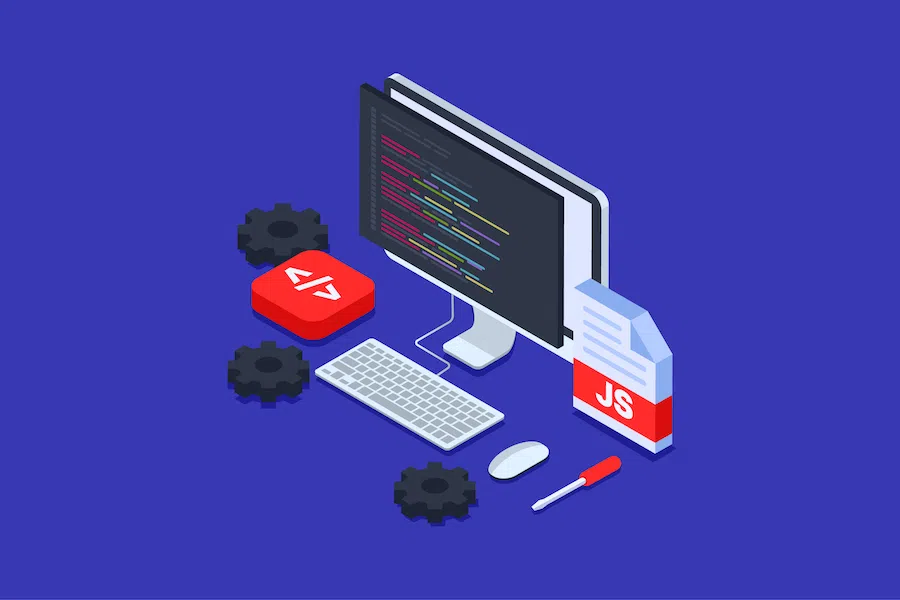
There are various factors affecting website load speeds. While you may have done an audit in the past, it is best to do it often to see how your website is doing.
Changes can take place at any given time. If neglected, they could be slowing your website down and driving visitors away. And you might not be aware of any such issues without a detailed performance report.
By closely monitoring your website, you can be sure to catch any problems early before they turn catastrophic. Some handy tools for an efficient audit include Google PageSpeed Insights, Pingdom, and GT Metrix.
After doing an audit, compare it to the previous reports to see if there have been any changes. And if anything has changed, identify the source of the change. Then work on it to avoid slipping behind your competitors.
Moreover, Pingdom has a paid version that alerts you of any issues in real-time. This pro version even comes with a mobile app. This way, you can keep tabs on your website’s health while on the go.
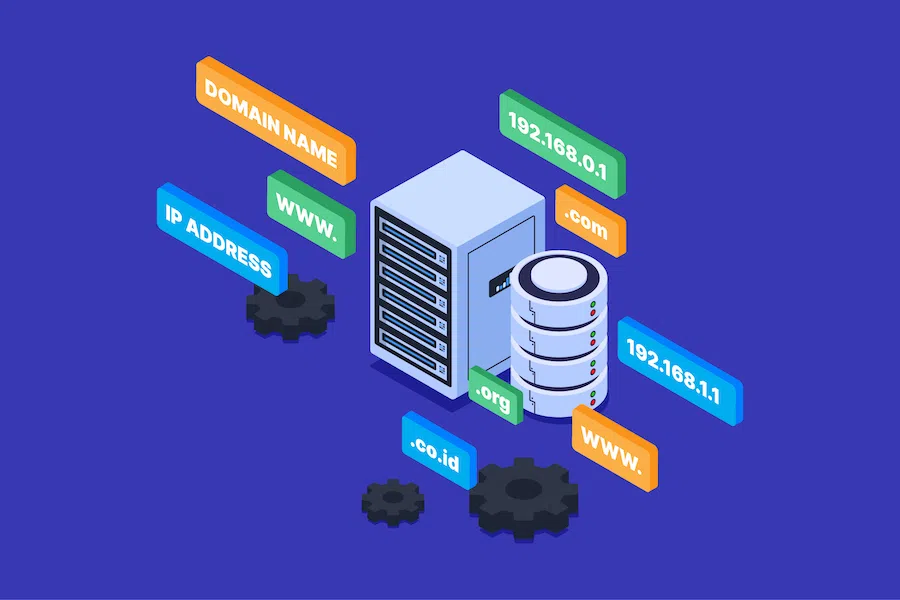
Your website’s TTFB is dependent on the DNS look-up time. In short, the DNS, or Domain Name System, is where databases and IP addresses are stored.
The process starts when a visitor inputs a specific URL onto their browser. The browser and ISP then send a query to the server to obtain an IP address. The IP address indicates where to find the information or website queried.
When this process is too long, users may click away, searching for information elsewhere. However, you can use a tool like UltraDNS to test your DNS look-up time.
Ideally, you want a DNS report indicating a query time ranging from 10 ms to 20 ms. If the figure goes beyond this, it may be time to look for a new DNS provider since this issue could be slowing your website.
With RoseHosting’s fully-managed fasted web hosting, your DNS look-ups are optimized with ease.
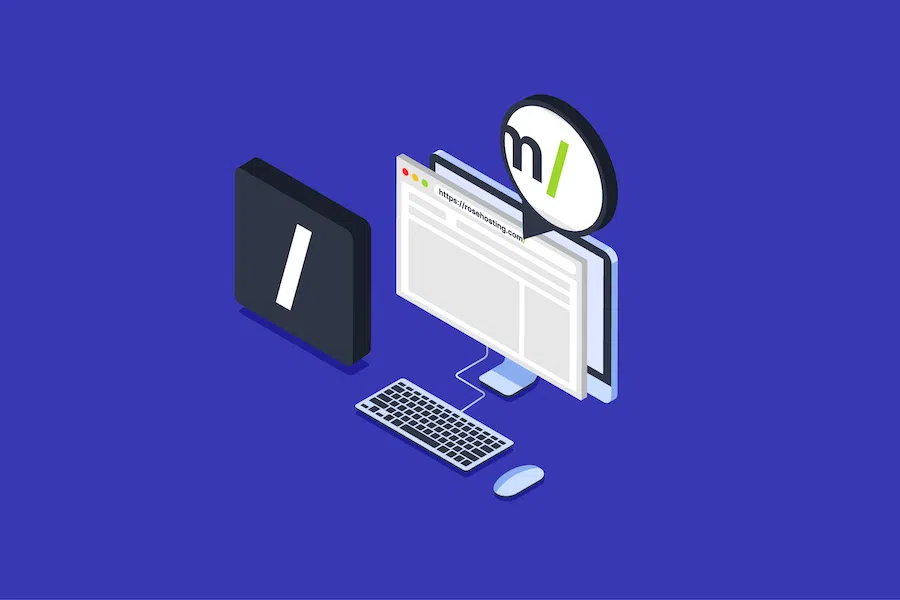
By omitting a slash sign on the URL end, you add more time to the loading process. This is because the server then treats the URL as a directory instead of a page.
And it creates an unnecessary 301 redirect that takes more time for the server to elicit a response. While the page load speed might seem instantaneous to you, milliseconds are added to the process. And these can add up to make your website load speed slow.
A trailing slash placed at the end of your URL tells the server it has reached the final page destination. Using our website home page as an example, the URL should look like this: https://rosehosting.com/.
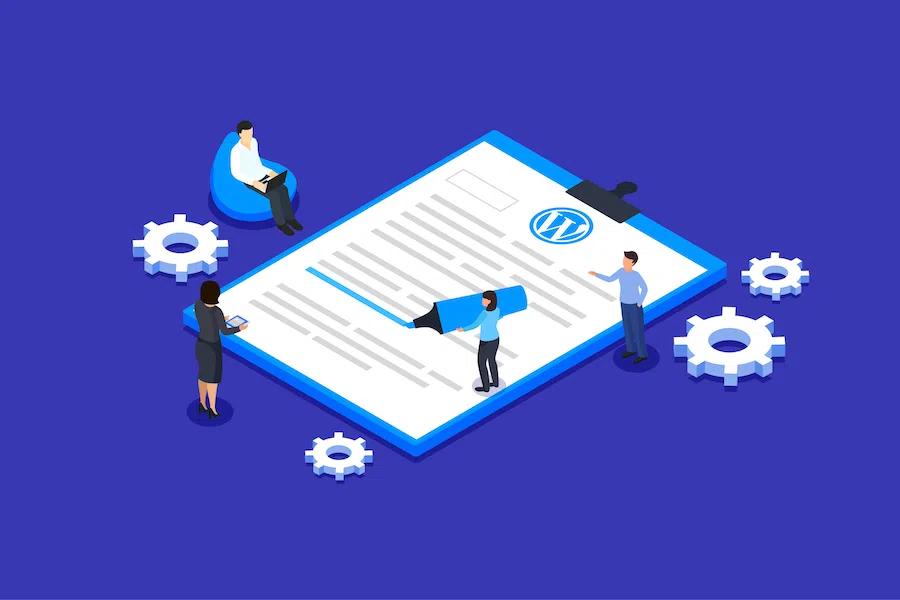
Each time you edit the content via your WordPress Content Management System (CMS), a new version of the website is stored. This is helpful on the one hand because it safeguards you against losing important data. With the old version still accessible, you can recall the changes if needed.
However, these backed-up versions take up more space and affect your website loading speed over time. Therefore, it’s better to choose whether to delete, optimize, or limit revisions.
To disable revisions, you can input the following code into the “wp-config.php” file:
“define( 'WP_POST_REVISIONS', false );”
Similarly, for revision limiting, you’ll also need to access the “wp-config.php” file and input this code:
“define( 'WP_POST_REVISIONS', 9 ); // “
In the above line of code, the number “9” specifies the limit of revisions.
The decision to select the best and fastest web hosting provider will significantly influence the success of your site. For this reason, you want to take your time and examine what each provider offers.
Here is a list of the factors you should consider in your selection.

No matter how appealing your site looks, a server problem can be detrimental to your online presence. In a 2013 server crash problem, Amazon reportedly lost $66,240 in revenue per minute.
When something like this occurs, you need the absolute best in customer support at your disposal. And the best providers will have real human support to attend to your needs.
Moreover, even if they use support tickets and emails, they should be quick to respond and resolve your issue.

Different hosting providers have unique pricing tiers for their services. While you may find one offering a free or discounted trial period, others will ask for total package payment upfront.
As a website owner, staying mindful of your hosting budget is essential, and you may find some services offered unnecessary. The best hosting provider will have flexible packages to customize your plan to your needs.

You may have chosen a shared plan at the start. However, down the road, you may need to expand your servers to a larger bandwidth to cater to the increased traffic.
Moreover, your website may need sub-domains, domains, or even new websites to reach the customers. So, when selecting your hosting provider, make sure they can allow for such improvements.
A good web hosting provider will allow you to upgrade your plan seamlessly as you scale. And it’s best to opt for a hosting provider offering a cloud-based hosting, VPS, or dedicated server to simplify the process.
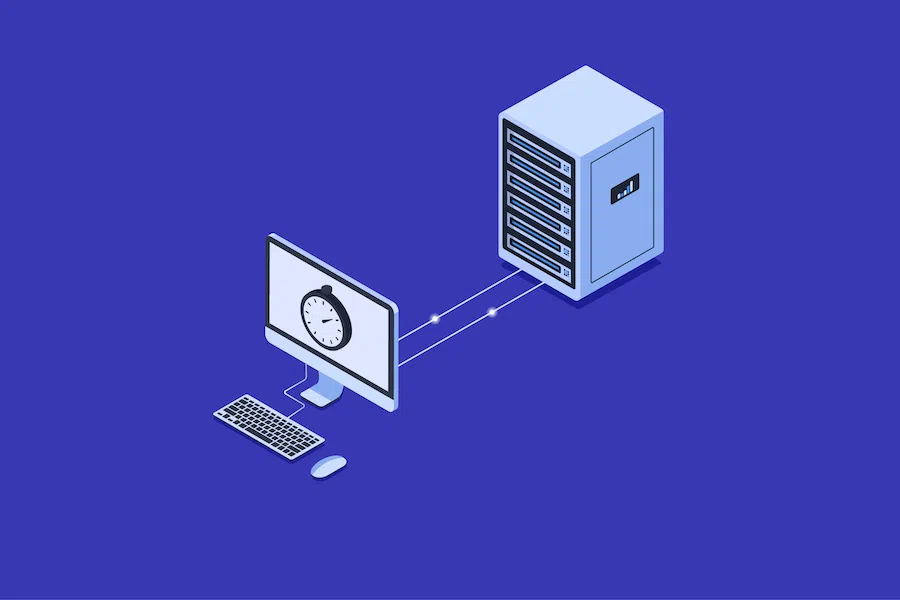
A server’s uptime score is a critical factor. The host's average downtime indicates how often you can expect your website to be offline. Like Amazon’s downtime incident, your customers won’t find you if your website goes offline, and you'll lose revenue.
This absence could also translate to a lower ranking and negative public perception. When sourcing the fastest web hosting provider, ensure that they register an uptime score above 99.95%.
You should avoid any provider reporting a score of less than this. Note that a premium provider, such as RoseHosting, records an average uptime of 99.9%.
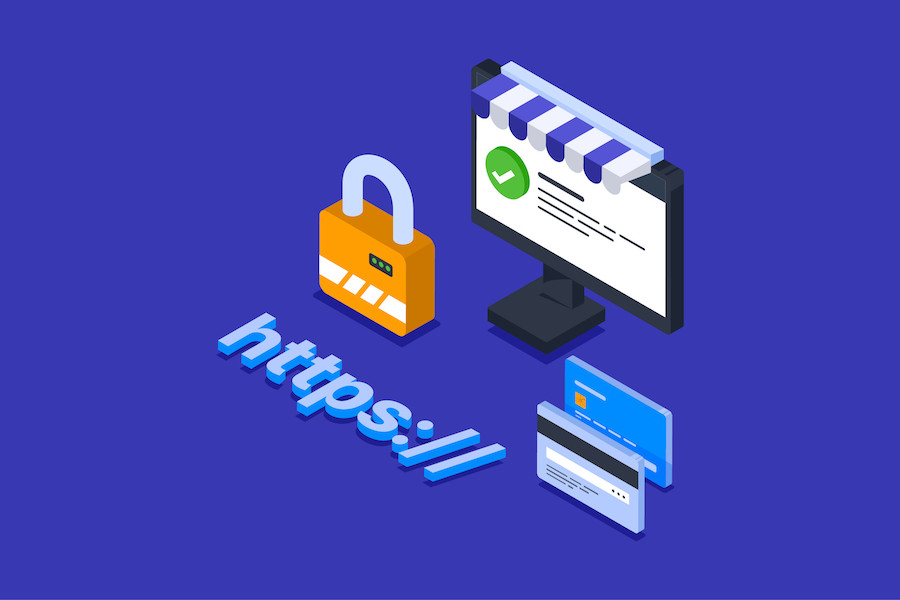
According to Global Sign, 85% of customers leave a site after noting it is not secure. So, generally speaking, an unsecured website is terrible for business.
An SSL certificate helps establish your brand as trustworthy and is something any good hosting service will provide. And it allows customers to feel comfortable sharing their information with you, especially if running an eCommerce site.
If your website is secure, a customer will note this by seeing a padlock before your URL. And if they click on it, a drop-down menu appears, assuring them of security.
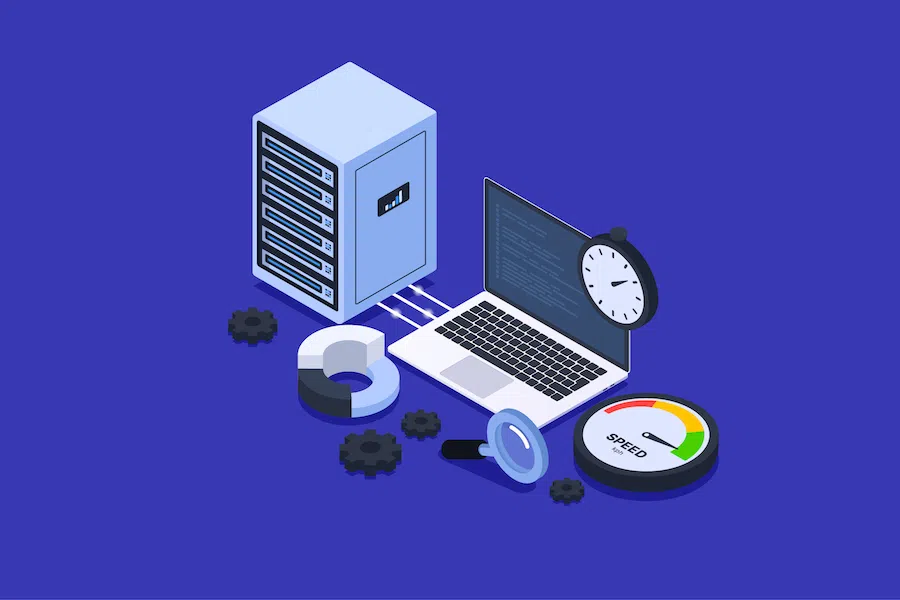
With search engines noting site speed as a primary ranking factor, you must ensure your host’s server speed is fast. If not, slow-loading pages will increase your visitor bounce rate resulting in low rankings.
Luckily, you can use handy tools to test a server’s load speed, like WebPageTest and Bitcatcha. These tools will allow you to test the server’s Time To First Byte (TTFB) capability. If the TTFB ranks low, it may be time to re-evaluate your plan or switch to a more reliable host.
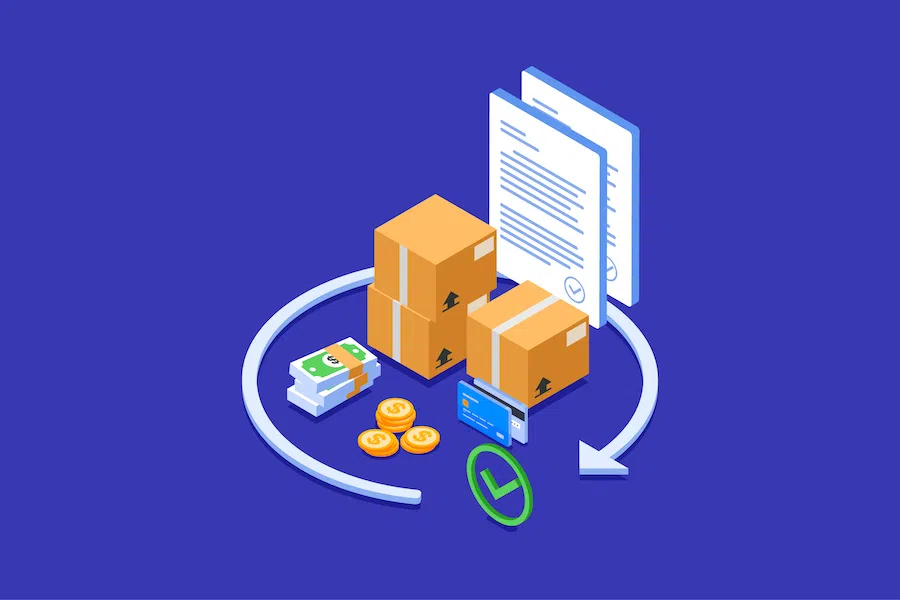
After opting for a web hosting solution, you may run into trouble with some aspects or find the solution unfit. In such a case, you’ll want to opt out and find a better fit to offer what your site needs.
The best hosting providers usually offer a refund on the amount spent. However, some provers may deduct funds based on their agreement terms.
But since you are starting out or under a tight budget, choose a hosting service that offers a full refund. And avoid any provider who does not provide any refund policy.
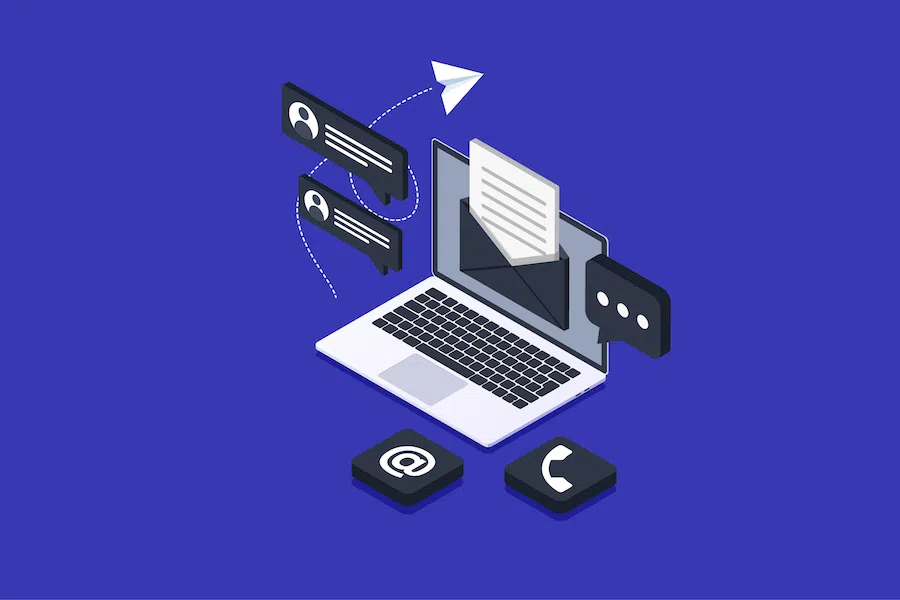
As a business fulfilling particular customer needs, you need the means to communicate with your customers and receive feedback from them. As such, your email address needs to look professional.
For this reason, you want to select a hosting provider that offers email services linked to your domain name. Their email service should also include certain security features to prevent spam and malicious emails.
Before engaging with the fastest web hosting providers, you’ll need to ask yourself a few pertinent questions. These should include:
While these questions may seem general, they are essential. Selecting the best hosting service will be easier if you understand your website needs.
They’ll also help you filter out the hosting providers available based on their specialization. For example, if you build an online marketplace, you will go for hosting providers specializing in eCommerce.
You can also take your research to web forums on the internet to see if specific hosting providers satisfy as promised. Hearing from clients based on their personal experience is better than hearing from the company’s marketing personnel.
At RoseHosting, we strive to remain the top dog in our customers' eyes by staying dedicated to their website hosting. Here are some of the perks you’ll receive as a RoseHosting customer:
Our firm started operations in 2001, and you can rely on our 20+ years of experience for the best possible service. When others were only selling shared hosting plans, we already offered dedicated VPSs to our clients. This illustrates how we leverage our industry expertise to stay ahead of the game.
There are no hidden charges or costs whatsoever. We guarantee that the amount advertised is the amount you can expect to pay.
Our average response time stands at less than a minute, with a technical support team permanently at the ready. We reply to tickets in less than five minutes, so you can rest assured of quick and solution-focused customer service.
To guarantee faster connections, we use OC3 Tier-1 and Gigabit upstream providers. Moreover, we only utilize enterprise-grade NVMe storage, which is far superior to traditional storage drives.
In fact, NVMe storage has proven to be 10 to 15 times faster than Solid State Drives. And older spinning disks don’t even compare, with NVMe storage outperforming them at 25 times the speed.
We understand that having full root access to your dedicated server is vital. With RoseHosting, you get full administrative access, which is a rare service to find in a hosting company.
Our team of engineers is always on standby and closely monitoring the servers. Furthermore, our servers come directly from DELL, the world’s leading server manufacturer and service provider.
Since 2003, our servers have registered an uptime score of more than 99.99%. And if for any reason, there is a server outage, we cover you for losses incurred. There’s simply no better guarantee on offer through any other hosting service provider.
There you have it: A detailed guide highlighting the importance of having the fastest web hosting provider.
While the list of website speed optimization techniques looks vast, going through these steps is vital to your website’s success.
At Rose Hosting, we have all your website loading speed goals covered. By choosing us, you can rest assured of the fastest web hosting service, bringing you closer to success. Contact us today at US: (888) 767-3467 or Intl: (314) 275-0414 to talk to a human customer support representative.